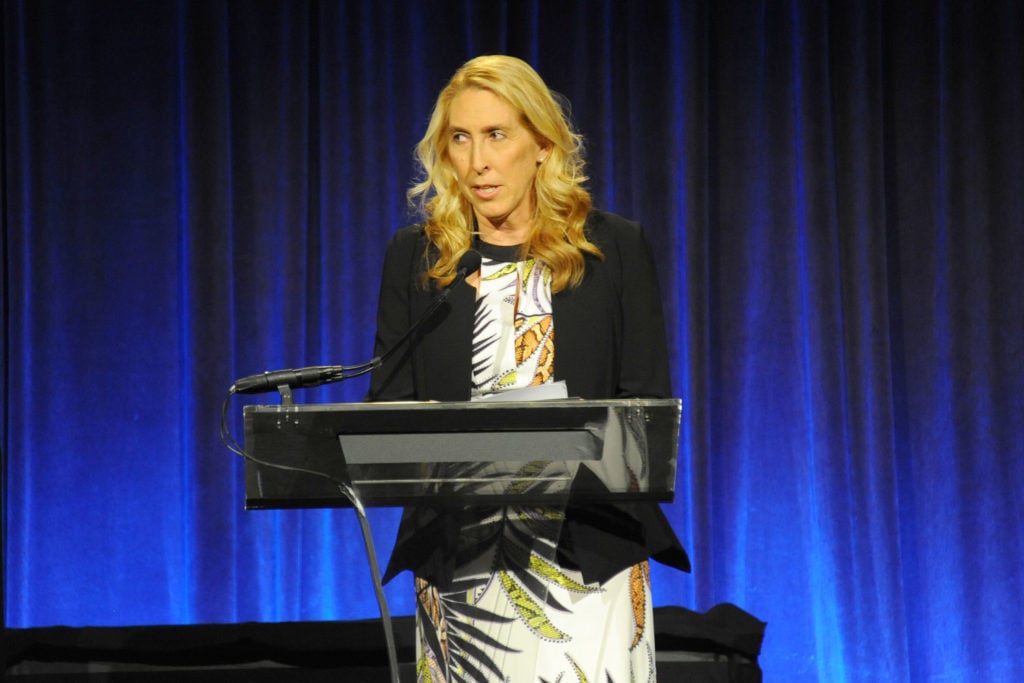Art World
The New Museum Will Put Its 23 Remaining Furloughed Staffers Back to Work Ahead of a Planned Fall Reopening
The museum is also expanding healthcare coverage for employees.

The museum is also expanding healthcare coverage for employees.

Eileen Kinsella

The New Museum will bring back all of its remaining furloughed staff, which includes 23 union and non-union workers, on August 17, ahead of a planned reopening this fall. The move, announced by director Lisa Phillips in a letter to staff yesterday, marks a rare bright spot amid ongoing job cuts at museums across the country.
The museum has also extended its salary reductions for executive-level staff through fiscal year 2021 and expanded its healthcare benefits to cover all regular employees who work at least 20 hours a week.
“As I’ve previously noted, since our closure in March, the economic impact has been significant,” Phillips wrote in the email, which was shown to Artnet News. Through the month of June, the museum lost $2.9 million in income and cut $1.8 million in expenses, “still leaving a $1.1 million shortfall,” she noted. “This year, we’ve reduced our operation and budget by 30 percent and are projecting an additional significant shortfall. These unprecedented times have called for tough decisions, and losing staff has been the most difficult.” (The museum laid off 18 of the 41 previously furloughed employees in July.)
A representative for the museum told Artnet News that the decision to re-employ its furloughed staff is a result of a commitment from the board and the US government’s Paycheck Protection Program (PPP) loans, which provided a financial incentive for small businesses or nonprofits of fewer than 500 employees to keep their workers on payroll.
In early 2019, New Museum staffers voted to join Local 2110 of the United Auto Workers, the same union that represents employees at New York’s Museum of Modern Art and the Bronx Museum. In the fall, the union reached a labor deal with museum leadership, ending a contentious and drawn-out negotiation process between the two parties over wages and benefits.
The approximately 70-member union announced at the time that they had agreed to a new five-year contract that would result in increased wages, additional paid time off, and lower health care costs.
“We’re also happy that the museum is now bringing the remaining furloughed employees back to work, as we’ve encouraged them to do in several effects bargaining meetings over the past few months,” a representative for the New Museum union told Artnet News. “Nonetheless, we note that the museum has laid off 25 employees during the pandemic; these include 16 bargaining unit members—among them the union’s entire steward committee—and several security guards. The layoffs disproportionately targeted unionized and other low-paid workers at the museum.”
The expansion of healthcare coverage for part-time workers has been a focal point of the union’s negotiations from the beginning. The union “fought tirelessly for museum management to provide health coverage to part-time workers,” the representative said. “We faced sustained opposition from the museum throughout this process, though we were able to win healthcare stipends for part-timers in our contract—and, more recently, we successfully pushed the museum to extend healthcare coverage for furloughed employees. While we’re thrilled to hear that they have finally recognized the necessity of safeguarding their employees’ health, we want to uplift the tireless efforts of our union members in making this possible.”
Phillips wrote in her email to staff that the museum is “proud of the collective bargaining agreement” and will “continue to honor the union contract, even at times exceeding some of the terms of that agreement.”
“The future of cultural institutions and the New Museum will look very different going forward, with changes to staff size and operations to ensure sustainability, and the reallocation of resources to promote greater equity,” Phillips added. “This is a significant but necessary recalibration that is part of a wider cultural reckoning.”